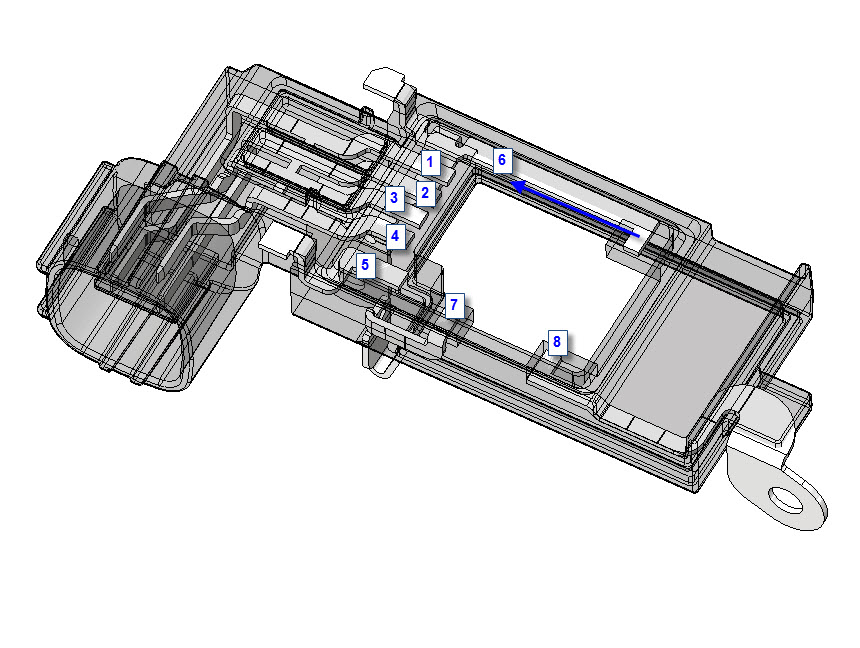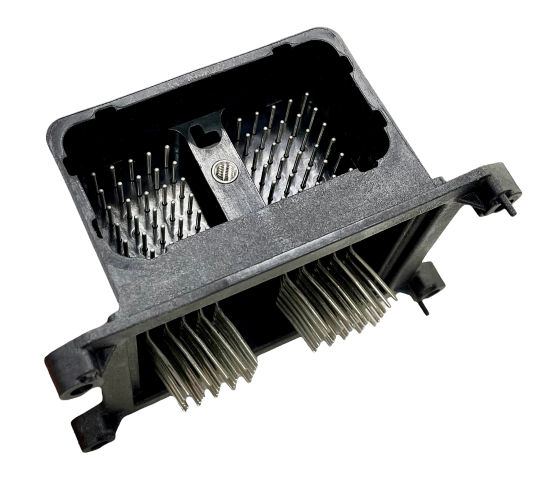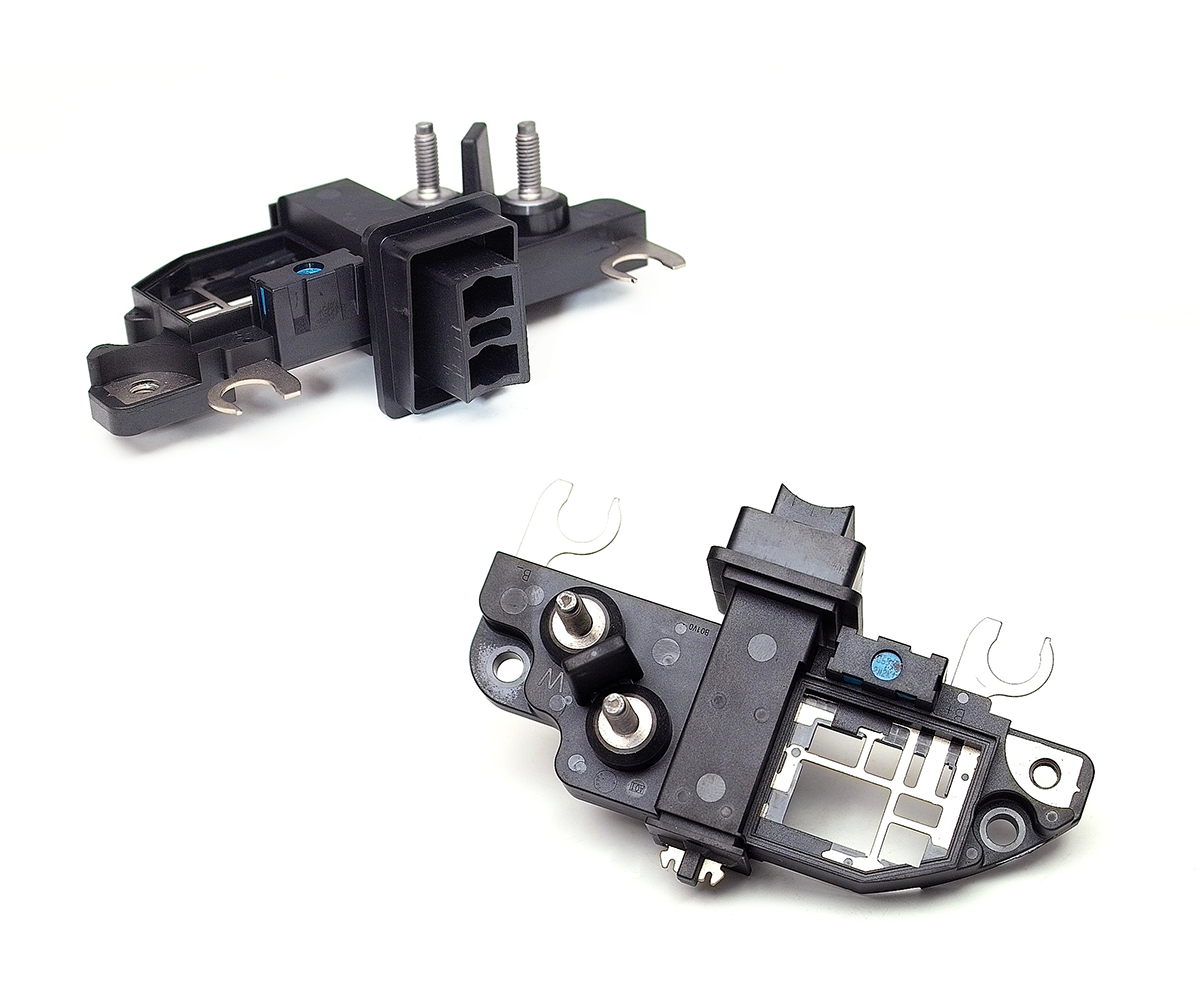Insert Molding
What is the Insert Molding Tech in Ming-Li company?
Insert Molding Tech in Ming-Li company
 Leading of insert molding ... In the field of manufacturing plastic insert molding we have always delivered high precision molds.
Leading of insert molding ... In the field of manufacturing plastic insert molding we have always delivered high precision molds.
Ming-Li is leading of insert molding technology in the industry. A preformed plastic or metal insert is incorporated into the component during the moulding stage or as a post moulding stage to improve the strength of the moulding or to add features to aid its functionality.
When inserts are used during the moulding stage standard moulding machines can make it difficult for operators to put inserts into their correct place in the tool. For this process vertical press machines and vertical machines with a rotary table are most effective.
The Benefits of Insert Moulding
- Downstream Cost Reduction – the need for secondary post moulding operations can be greatly reduced by creating more complex components
- Assembly made easy – high precision metal components can be incorporated into the moldings to allow components to be screwed or clipped together
- Component consistency – operator error is eliminated achieving high levels of consistency and precision
- Component complexity – a simple moulding tool can achieve a complex component by using a well machined metal insert
- Reduced Component size and weight – by combining the physical strength of the polymer and the metal insert, the insert moulding produces a smaller and lighter component
- Component cost reduction – as a simple tool can be used with the insert, this can lead to a component being lower cost to manufacture
- Increased design flexibility – designers can appreciate the virtually unlimited configurations that the insert plastic injection moulding process allows.

Typical insert moulded components
Many industries can benefit from incorporating insert molding into their component design. The Insert Moulding Company cover a wide industry base including military, automotive, electronics, electrical, medical, life sciences, banking equipment, aerospace, marine, furniture, building components.
The types of insert moulding manufactured include:
- Electrical and electronic pins
- Electrical and electronic contacts and connectors
- Switches
- Mechanical assemblies
- Life science sensors
- Fasteners
- Gears
Ming-Li ability for insert molding technology
Insert molding is a specialized injection molding process where a preformed component, often made of metal or another material, is placed into the mold cavity before plastic resin is injected. The molten plastic then surrounds the insert, forming a single molded piece with the insert encapsulated or partially embedded within it. This process is used to enhance product functionality, durability, and aesthetics. Here are some key points regarding the abilities and advantages of insert molding technology:
-
Enhanced Component Integration: Insert molding allows for the integration of multiple parts into a single component, reducing assembly steps and potential points of failure. It enables the creation of complex parts with integrated features.
-
Improved Strength and Durability: By encapsulating inserts within the plastic material, insert molding can enhance the strength and durability of the final product. The bond between the insert and the plastic can provide better resistance to mechanical stresses and vibration.
-
Cost Efficiency: Although insert molding may have higher initial tooling costs compared to traditional molding processes, it can lead to overall cost savings by reducing assembly time, labor costs, and material waste. It also eliminates the need for additional fasteners or adhesive bonding.
-
Design Flexibility: Insert molding offers design flexibility, allowing engineers to create parts with intricate geometries, varying material properties, and integrated features. This flexibility enables the optimization of product performance and functionality.
-
Material Compatibility: Insert molding can accommodate a wide range of materials for both the inserts and the plastic resin, providing compatibility with different material properties and requirements. This versatility allows for the creation of customized solutions for various applications.
-
Scalability: Insert molding is a scalable process suitable for both low-volume prototyping and high-volume production. It offers consistent part quality and dimensional accuracy across large production runs.
-
Streamlined Assembly: By consolidating multiple components into a single molded part, insert molding simplifies the assembly process, reducing the number of individual parts to handle and assemble. This streamlining can improve manufacturing efficiency and reduce the risk of assembly errors.
-
Customization and Branding: Inserts can include features such as logos, branding, or functional elements that enhance the aesthetics and identity of the final product. This customization can add value and differentiation in the market.
Overall, insert molding technology offers numerous advantages in terms of product design, performance, cost efficiency, and manufacturing efficiency, making it a valuable process for various industries ranging from automotive and electronics to medical devices and consumer goods.
How to make insert molding well?
Making insert molding successful involves careful consideration of various factors throughout the entire process, from design to production. Here are some key steps to ensure successful insert molding:
-
Design Considerations:
- Design parts with appropriate tolerances to ensure proper fit between the insert and the mold.
- Design the insert with features that facilitate bonding with the plastic resin.
- Ensure adequate draft angles and parting lines for easy ejection of the molded part.
- Optimize part geometry to minimize stress concentrations and potential for defects.
-
Material Selection:
- Choose suitable materials for both the insert and the plastic resin based on mechanical, thermal, and chemical properties required for the application.
- Consider compatibility between materials to ensure proper bonding and adhesion.
-
Mold Design:
- Design molds with precision to accommodate inserts securely and precisely.
- Use proper gating and venting systems to ensure uniform resin flow and minimize defects such as voids or sink marks.
- Incorporate cooling channels to control cycle times and maintain consistent part quality.
-
Insert Preparation:
- Clean and pretreat inserts to remove any contaminants or surface impurities that could impair bonding with the plastic resin.
- Apply surface treatments or primers to promote adhesion between the insert and the plastic resin.
-
Injection Molding Process:
- Optimize process parameters such as injection pressure, temperature, and cooling time to achieve proper flow and bonding between the insert and the plastic resin.
- Ensure proper alignment and positioning of inserts within the mold cavity to prevent misalignment or shifting during the molding process.
- Monitor and control process parameters to maintain consistency and quality throughout the production run.
-
Quality Control:
- Implement quality control measures such as visual inspection, dimensional measurement, and functional testing to ensure that molded parts meet specifications.
- Regularly inspect molds for wear, damage, or degradation that could affect part quality.
- Implement corrective actions promptly to address any issues identified during production.
-
Post-Molding Operations:
- Trim excess flash or sprues from molded parts to achieve the desired final geometry.
- Perform secondary operations such as machining, welding, or assembly as needed to complete the final product.
-
Continuous Improvement:
- Collect data and feedback from the production process to identify areas for improvement.
- Implement changes or optimizations to enhance efficiency, quality, and cost-effectiveness.
By following these steps and paying attention to detail at each stage of the insert molding process, manufacturers can produce high-quality parts that meet the requirements of their intended applications.
To know more Ming-Li insert molding part, see our Insert Molding parts.
To see insert molding process in Ming-Li please link with following YouTube video:
https://www.youtube.com/watch?v=I4eRqW78Hfo
https://www.youtube.com/watch?v=sicmD6B7Xtc

